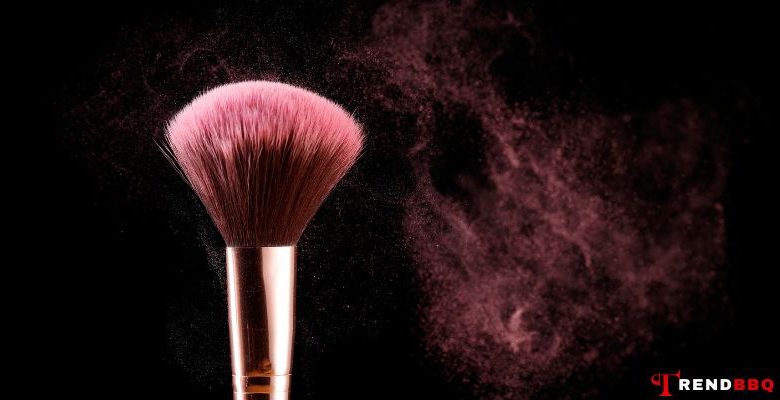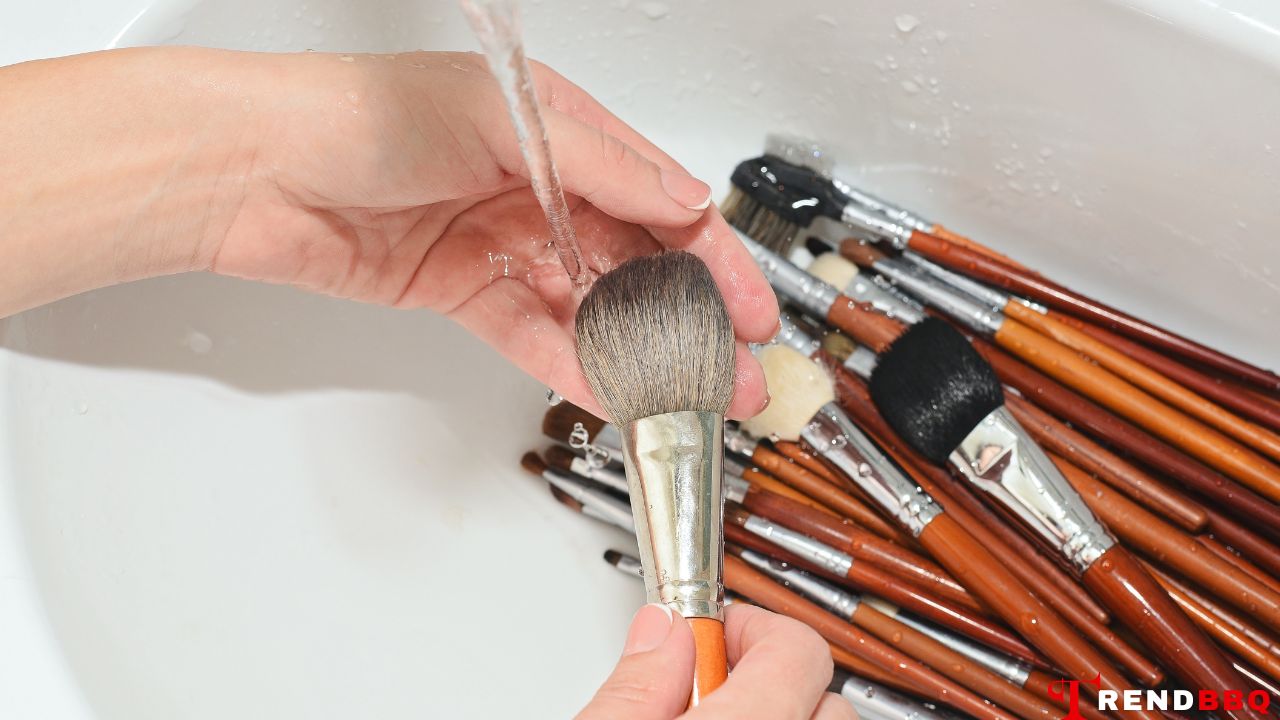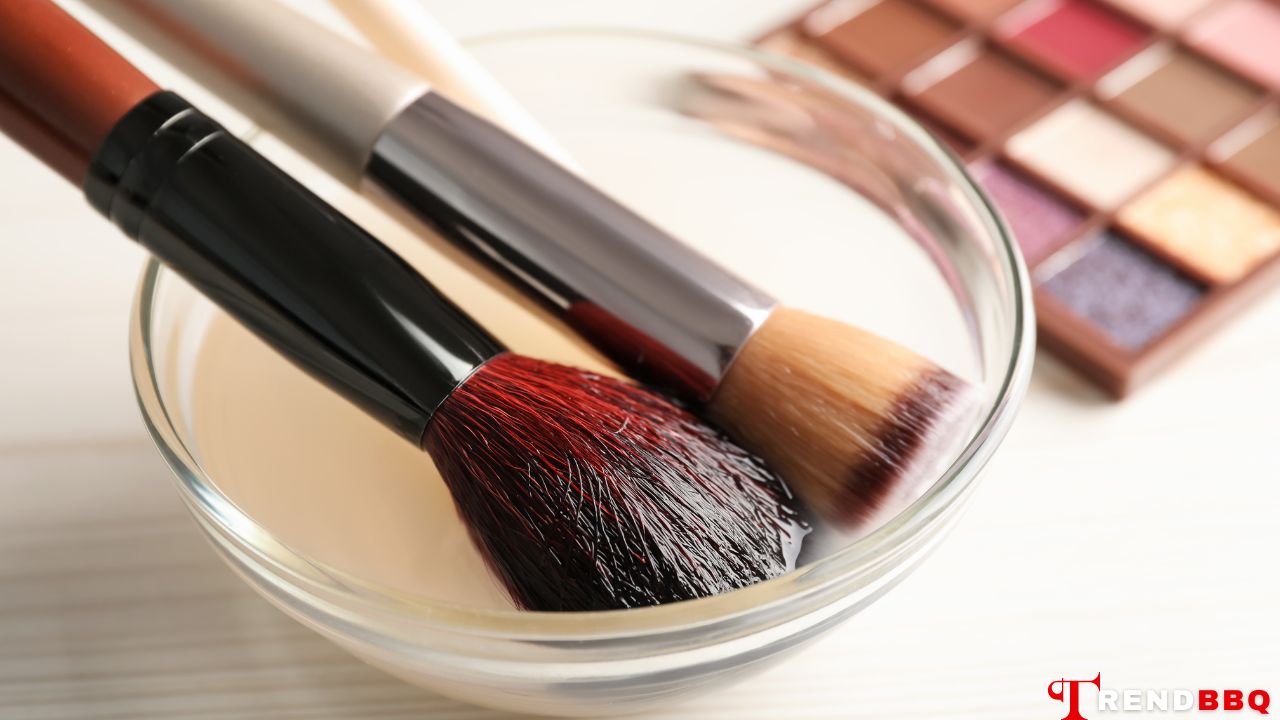
Makeup brushes are essential tools for creating flawless looks, but they also need regular cleaning to keep them in good shape and prevent bacteria buildup. Cleaning your makeup brushes doesn’t have to be a hassle, though. In this article, Trendbbq will show you how to clean makeup brushes at home using simple and effective methods.
Table of Contents,
1. Why You Should Clean Your Makeup Brushes
Taking the time to clean your makeup brushes yields a range of advantages, including:
- Deep Cleansing: The process effectively rids your brushes of residual makeup, oils, accumulated dirt, and lifeless skin cells. This action helps unclog your pores and acts as a deterrent against potential breakouts.
- Preserving Brush Integrity: Regular cleaning plays a pivotal role in maintaining the pristine state and overall performance of your brushes. By doing so, it safeguards the bristles from harm and minimizes the risk of shedding over time.
- Minimizing Cross-Contamination: Consistent brush cleaning aids in preventing the mingling of colors and products. This is particularly crucial if you employ the same brush for various tasks, ensuring the purity of your makeup application.
- Economical Value: Embracing the practice of brush cleaning goes a long way in extending the longevity of your brushes. By curbing the need for frequent replacements, you effectively cut down on expenses and derive more utility from your existing collection.
2. How Often You Should Clean Your Makeup Brushes
How often you clean your makeup brushes depends on how frequently you use them and the type of products you use them with. As a general rule, you should clean your makeup brushes at least once a week if you use them daily. However, some brushes may need more frequent cleaning than others. For example:
- Brushes that are used for liquid or cream products, such as foundation, concealer, or cream blush, should be cleaned after every use or every other use to prevent product buildup and bacteria growth.
- Brushes that are used for powder products, such as eyeshadow, bronzer, or highlighter, can be cleaned once a week or every two weeks, depending on how much product you use and how pigmented it is.
- Brushes that are used for eyeliner or lip products should be cleaned after every use or every other use to avoid transferring bacteria to your eyes or mouth.
3. How to Clean Makeup Brushes with Soap and Water
Cleaning your makeup brushes with soap and water is a simple and effective method to remove makeup residue, oils, and bacteria from the bristles. Here’s a step-by-step guide on how to clean your makeup brushes using soap and water:
Materials Needed
- Mild liquid soap (baby shampoo, gentle facial cleanser, or specialized brush cleanser)
- Lukewarm water
- Clean towel or paper towel
- Small bowl or basin
Steps
Prepare the Cleaning Solution:
- Fill a small bowl or basin with lukewarm water. Avoid using hot water, as it can damage the bristles and affect the glue that holds the bristles together.
- Add a small amount of mild liquid soap to the water. A few drops are usually sufficient. Choose a soap that is gentle and doesn’t contain harsh chemicals that can damage the bristles.
Wet the Brush Bristles: Hold the brush under running lukewarm water or dip the bristles into the soapy water. Make sure the water doesn’t come into contact with the brush’s handle or ferrule (the metal part connecting the bristles to the handle), as it can loosen the glue over time.
Lather and Clean: Gently swirl the brush bristles in the soapy water or use your fingers to create a lather. You can also use a textured brush cleaning mat or silicone cleaning pad to help dislodge makeup and dirt.
Rinse Thoroughly: Rinse the brush under running lukewarm water until the water runs clear and there are no soap suds left.
Gently Squeeze Out Excess Water: Gently squeeze the bristles from the base to the tips to remove excess water. Be gentle to avoid damaging the bristles.
Reshape the Bristles: Use your fingers to reshape the bristles to their original shape. This step is important to maintain the brush’s form.
Dry the Brushes:
- Lay a clean towel or paper towel on a flat surface.
- Lay the damp brushes on the towel with the bristles hanging off the edge to allow air circulation.
- It’s best to avoid standing the brushes upright when they’re wet, as water has the potential to seep into the ferrule and weaken the glue.
- Let the brushes air dry completely. This can take several hours to overnight, depending on the brush size and density.

4. How to Clean Makeup Brushes with Vinegar
An alternative method for cleansing your makeup brushes involves using vinegar, which boasts natural antibacterial and antifungal properties. Moreover, vinegar proves effective in dissolving any mineral build-up or stubborn hard water spots present on your brushes. However, be mindful that vinegar’s potency might be harsh on certain synthetic bristles. To address this, it’s advised to use it cautiously and dilute it with water. Here’s a structured guide to follow:
- Prepare the Solution: Begin by filling a small bowl with one part vinegar and two parts water. If you desire an additional touch of fragrance and disinfection, consider incorporating a few drops of essential oil, such as lavender or tea tree.
- Dip and Swirl: Dip the bristles of your brush into the vinegar solution and gently swirl them around for a brief duration. Avoid prolonged soaking, as this could potentially cause damage to the bristles.
- Rinse Thoroughly: Thoroughly rinse the brush under running water until any trace of vinegar scent is completely eliminated. To expedite drying, make use of a clean towel or paper towel to gently remove any excess moisture.
- Reshape and Dry: With your fingers, carefully reshape the bristles to their natural form. Lay the brush flat on a dry towel to allow air drying. This process ensures optimal drying conditions and helps maintain the brush’s integrity.

5. How to Clean Makeup Brushes with Alcohol
An additional technique to effectively cleanse your makeup brushes involves utilizing alcohol, renowned for its ability to swiftly eliminate germs and sanitize your brushes. Alcohol proves particularly adept at dissolving oily or waxy residues that might accumulate on your brushes, such as eyeliner or lipstick. Nonetheless, it’s worth noting that alcohol can potentially lead to dryness and damage in the case of certain natural bristles. To ensure proper usage, apply it sparingly and solely when necessary:
- Prepare the Alcohol Solution: Begin by pouring rubbing alcohol with a concentration of at least 70% into a small spray bottle or a shallow dish.
- Apply the Alcohol: Proceed to either spray the alcohol solution onto the bristles of your brush or dip the brush directly into the alcohol. Subsequently, gently wipe off the bristles using a clean towel or paper towel. It’s crucial not to immerse the brush entirely in alcohol, as this could potentially compromise the integrity of the bristles.
- Facilitate Drying: Allow the brush to air dry completely before considering its use once again. Given alcohol’s rapid evaporation rate, the drying process should transpire relatively swiftly, rendering your brush ready for application in no time.
6. How to Clean Makeup Sponges
Makeup sponges, such as beauty blenders or makeup wedges, also need regular cleaning to keep them hygienic and prevent bacteria growth. You can use the same methods as cleaning makeup brushes, but with some slight modifications. Here are the steps to follow:
- Prep the Sponge: Begin by wetting your sponge under lukewarm running water, taking care to squeeze out any excess water.
- Apply Cleansing Agent: Next, apply a small amount of soap or cleanser to the damp sponge, working it into a foamy lather. Alternatively, you could opt for a dedicated sponge cleanser or utilize a solid soap bar for this purpose.
- Thoroughly Cleanse: Employ a gentle squeezing and massaging motion to the sponge, ensuring the effective removal of residual makeup and accumulated dirt. Continue rinsing the sponge under running water until the water runs clear.
- Drain Excess Water: After cleansing, gently squeeze out any surplus water from the sponge using a clean towel or paper towel. For thorough drying, allow the sponge to air dry completely. As an optional step, you might consider microwaving the damp sponge for approximately 10 to 15 seconds, a practice that aids in eliminating any lingering germs. However, take care to ensure the sponge is damp, not dry, before proceeding with this step.
How to clean makeup brushes is an important part of your beauty routine that can help you achieve better results and prevent skin problems. By following these simple tips, you can keep your makeup tools clean and fresh without spending too much time or money. Remember to clean your makeup brushes and sponges at least once a week or more often depending on how you use them. Your skin and your brushes will thank you for it!
7. FAQs
Why is it important to clean makeup brushes regularly?
Cleaning makeup brushes removes built-up product, oils, bacteria, and dirt, ensuring better makeup application and preventing skin irritation or breakouts.
How often should I clean makeup brushes?
Aim to clean your makeup brushes at least once a week for brushes used with liquid or cream products, and every 2 weeks for brushes used with powder products.
What’s the best way to clean makeup brushes?
Wet the brush bristles with lukewarm water, apply mild soap or brush cleaner, gently lather, then rinse thoroughly under running water until water runs clear.
Can I use regular soap or shampoo to clean my brushes?
It’s better to use a gentle, fragrance-free brush cleaner or mild shampoo. Harsh soaps or shampoos can damage bristles and leave residue.
How can I prevent water from damaging the brush handles?
When washing your brushes, avoid submerging the entire brush, focusing only on the bristles. Water can weaken the glue holding bristles in place.



